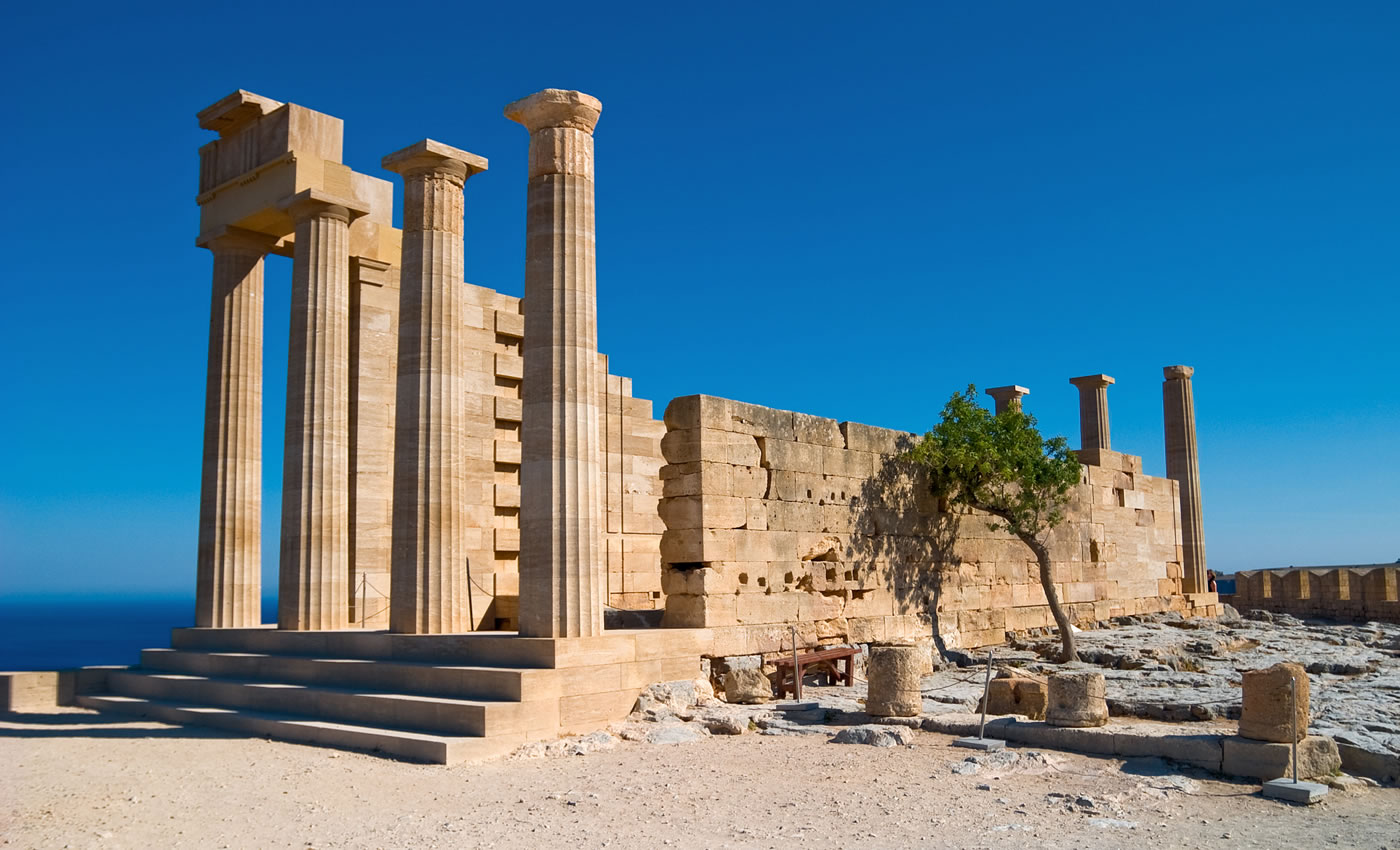In every era of the history, the most powerful emperors always desired to conquer Rhodes. Romans, the Knights of Saint John, Ottoman Empire and Italians have all contributed to the islands culture and historical heritage.

Acropolis – Athena Temple
Throughout the 14th and 15th century, Knights of St John (Rhodian and Maltese Knights) left the most important marks on the city’s architecture.
The Old Town, which is surrounded by high walls, is registered with UNESCO as a world heritage site.

The Castle of Rhodes – Old Town
In 1522, Rhodes was defeated by the army of Suleyman the Magnificent and the island prosperred under Ottoman’s reign approximately 400 years. Within this period many mosques, almshouses, and schools were established and roads were constructed.

Suleymaniye Mosque, Rhodes
Colossus of Rhodes
Colossus of Rhodes (32 meters in height), once believed to be at the entrance of the city harbour of Rhodes, was made of bronze and it was representing the Greek God of Helios. This statue is accepted to be one of the Seven Wonders of the world.
Standing at the entrance of the harbour, ships have reportedly sailed between the legs of the Colossus. After a victorious battle won by the Dors, it was built as a victory memorial and as an expression of gratitude to the Deity Helios. The bronze sculpture took 12 years to cast by the artist Khares. The Colossus was completed in 209 BC, but it collapsed by an earthquake and stayed tilted for few centuries.

Colossus